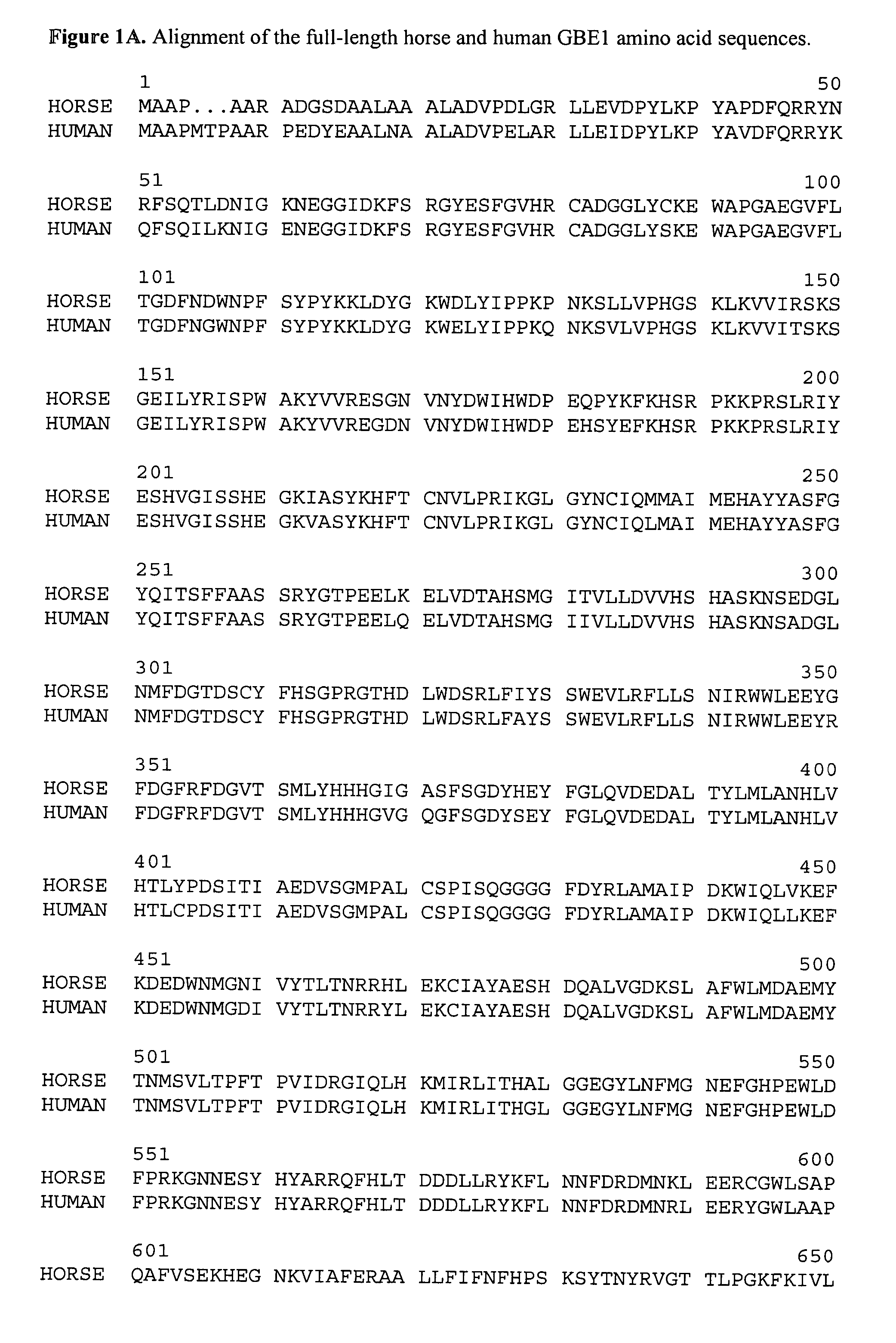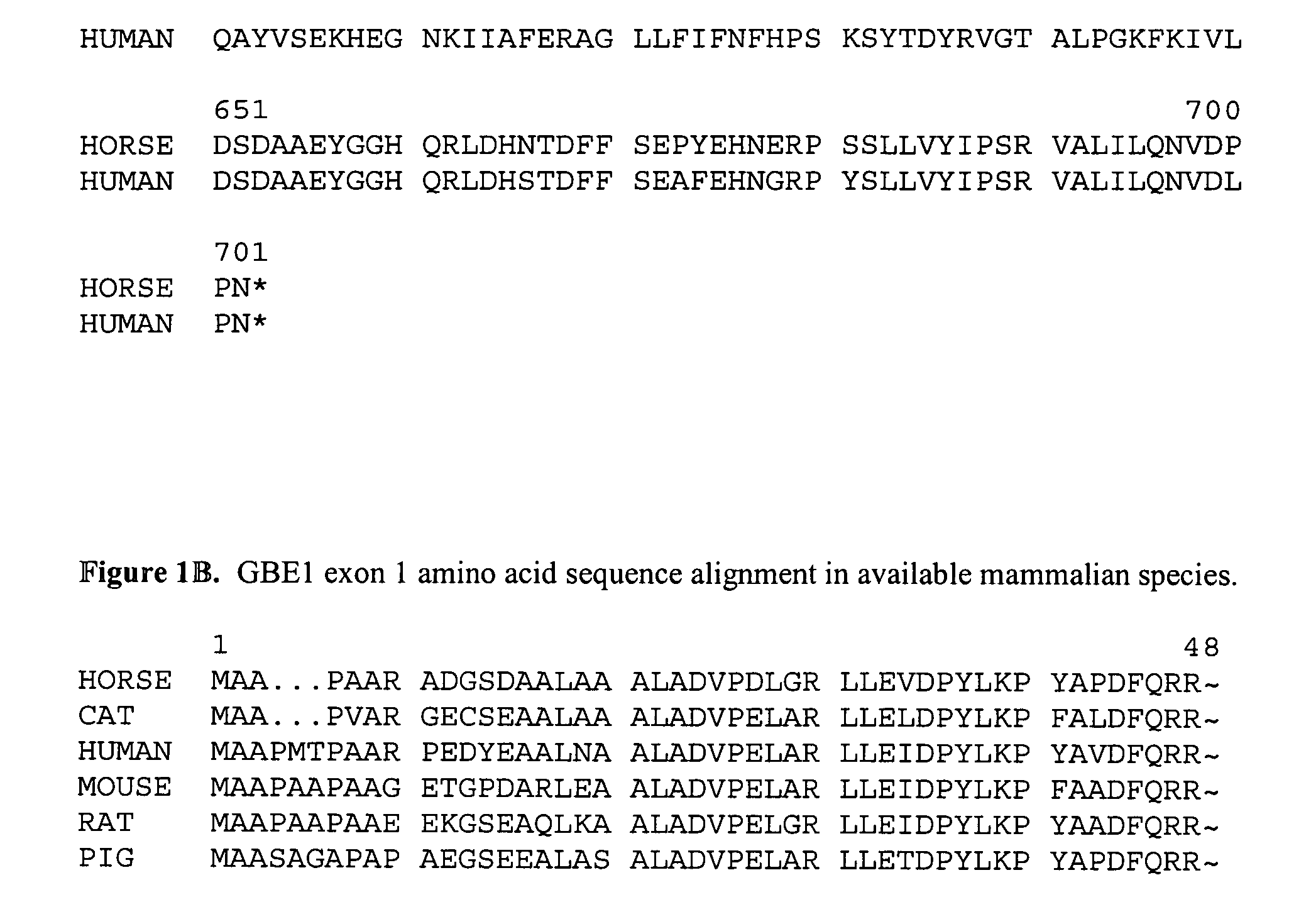Method of detecting equine glycogen storage disease IV
a glycogen storage disease and equine technology, applied in the field of detecting equine glycogen storage disease iv, can solve the problems of terminal liver failure, storage of glycogen, and inability to produce enough glucose in the blood stream or utilize glucose as energy sources
- Summary
- Abstract
- Description
- Claims
- Application Information
AI Technical Summary
Problems solved by technology
Method used
Image
Examples
example 1
Glycogen Branching Enzyme (GBE1) Mutation Causing Fatal Glycogen Storage Disease IV in American Quarter Horse Foals
Introduction
[0125]Glycogen is a vital storage form of carbohydrate in many cells that is composed of straight-chain α-1,4 glucose linkages with α-1,6 branch points approximately every seven to nine residues. Glycogen synthase synthesizes the straight-chain α-1,4 glucosyl linkages from UDP-glucose, while glycogen branching enzyme (1,4-α-glucan branching enzyme; GBE1) transfers existing blocks of glucosyl residues from a growing chain to another chain to produce α-1,6 linkages. Glucose is mobilized from glycogen by the combined action of glycogen phosphorylase and debranching enzyme. Glycogen supplies in the liver are essential for maintaining blood glucose homeostasis, while cardiac and skeletal muscle glycogen is used to fuel muscle contraction. A number of glycogen storage disorders (glycogenoses) due to mutations in enzymes of glycogenolysis, glycolysis, and glycogen ...
PUM
| Property | Measurement | Unit |
|---|---|---|
| Tm | aaaaa | aaaaa |
| temperatures | aaaaa | aaaaa |
| Tm | aaaaa | aaaaa |
Abstract
Description
Claims
Application Information
 Login to View More
Login to View More - R&D
- Intellectual Property
- Life Sciences
- Materials
- Tech Scout
- Unparalleled Data Quality
- Higher Quality Content
- 60% Fewer Hallucinations
Browse by: Latest US Patents, China's latest patents, Technical Efficacy Thesaurus, Application Domain, Technology Topic, Popular Technical Reports.
© 2025 PatSnap. All rights reserved.Legal|Privacy policy|Modern Slavery Act Transparency Statement|Sitemap|About US| Contact US: help@patsnap.com



